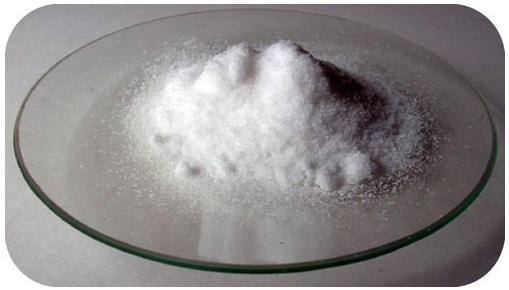15.8: Dissociation
- Page ID
- 53844
In many areas, winter ice on the streets and sidewalks represents a serious walking and driving hazard. One common approach to melting the ice is to put some form of deicing salt on the surface. Materials such as sodium chloride or calcium chloride are frequently employed for this purpose. In order to be effective, the solid material must first dissolve and break up into the ions that make up the compound.
Dissociation
An ionic crystal lattice breaks apart when it is dissolved in water. Dissociation is the separation of ions that occurs when a solid ionic compound dissolves. It is important to be able to write dissociation equations. Simply undo the crisscross method that you learned when writing chemical formulas of ionic compounds. The subscripts for the ions in the chemical formulas become the coefficients of the respective ions on the product side of the equation. Shown below are dissociation equations for \(\ce{NaCl}\), \(\ce{Ca(NO_3)_2}\), and \(\ce{(NH_4)_3PO_4}\).
\[\ce{NaCl} \left( s \right) \rightarrow \ce{Na^+} \left( aq \right) + \ce{Cl^-} \left( aq \right)\nonumber \]
\[\ce{Ca(NO_3)_2} \left( s \right) \rightarrow \ce{Ca^{2+}} \left( aq \right) + 2 \ce{NO_3^-} \left( aq \right)\nonumber \]
\[\ce{(NH_4)_3PO_4} \left( s \right) \rightarrow 3 \ce{NH_4} \left( aq \right) + \ce{PO_4} \left( aq \right)\nonumber \]
The formula unit of sodium chloride dissociates into one sodium ion and one chloride ion. The calcium nitrate formula unit dissociates into one calcium ion and two nitrate ions. This is because of the \(2+\) charge of the calcium ion. Two nitrate ions, each with a \(1-\) charge are required to make the equation balance electrically. The ammonium phosphate formula unit dissociates into three ammonium ions and one phosphate ion. Note that the polyatomic ions themselves do not dissociate further, but remain intact.
Do not confuse the subscripts of the atoms within the polyatomic ion for the subscripts that result from the crisscrossing of the charges that make up the original compound neutral. The 3 subscript of the nitrate ion and the 4 subscript of the ammonium ion are part of the polyatomic ion and simply remain as part of its formula after the compound dissociates. Notice that the compounds are solids \(\left( s \right)\) which then become ions in aqueous solution \(\left( aq \right)\).

Nonelectrolytes do not dissociate when forming an aqueous solution. An equation can still be written that simply shows the solid going into solution. For the dissolution of sucrose:
\[\ce{C_{12}H_{22}O_{11}} \left( s \right) \rightarrow \ce{C_{12}H_{22}O_{11}} \left( aq \right)\nonumber \]
Summary
- Dissociation is the separation of ions that occurs when a solid ionic compound dissolves.
- Nonionic compounds do not dissociate in water.

